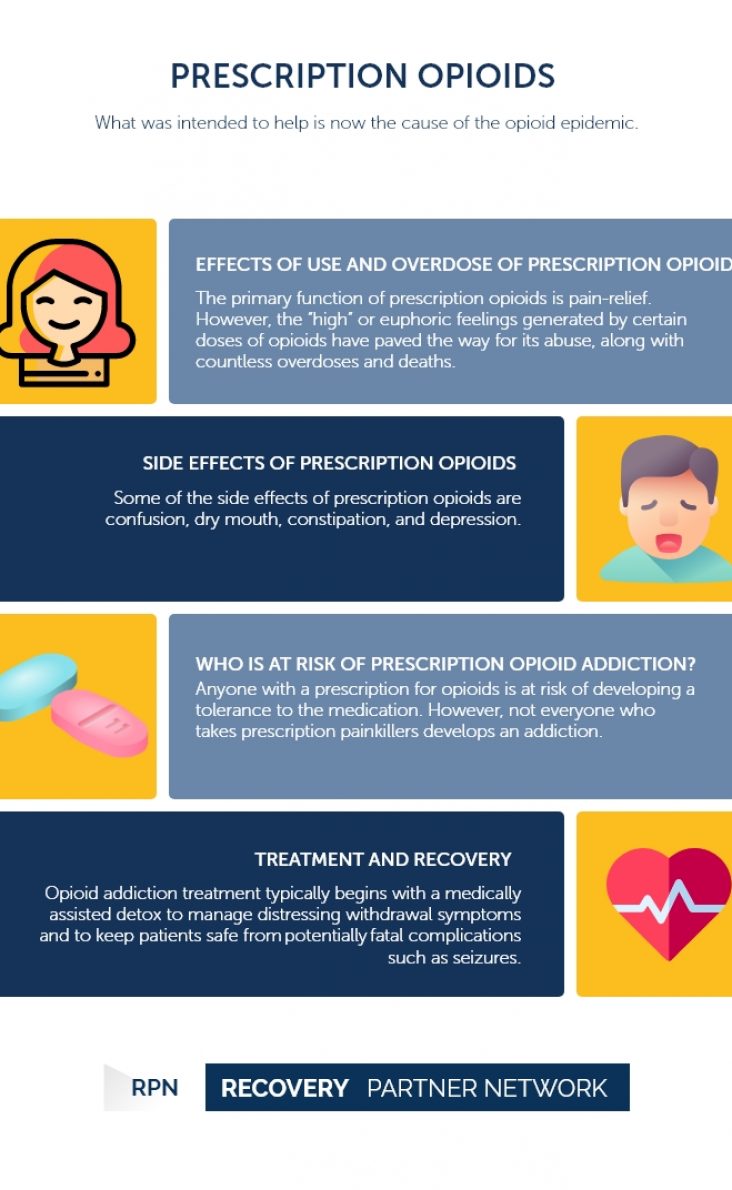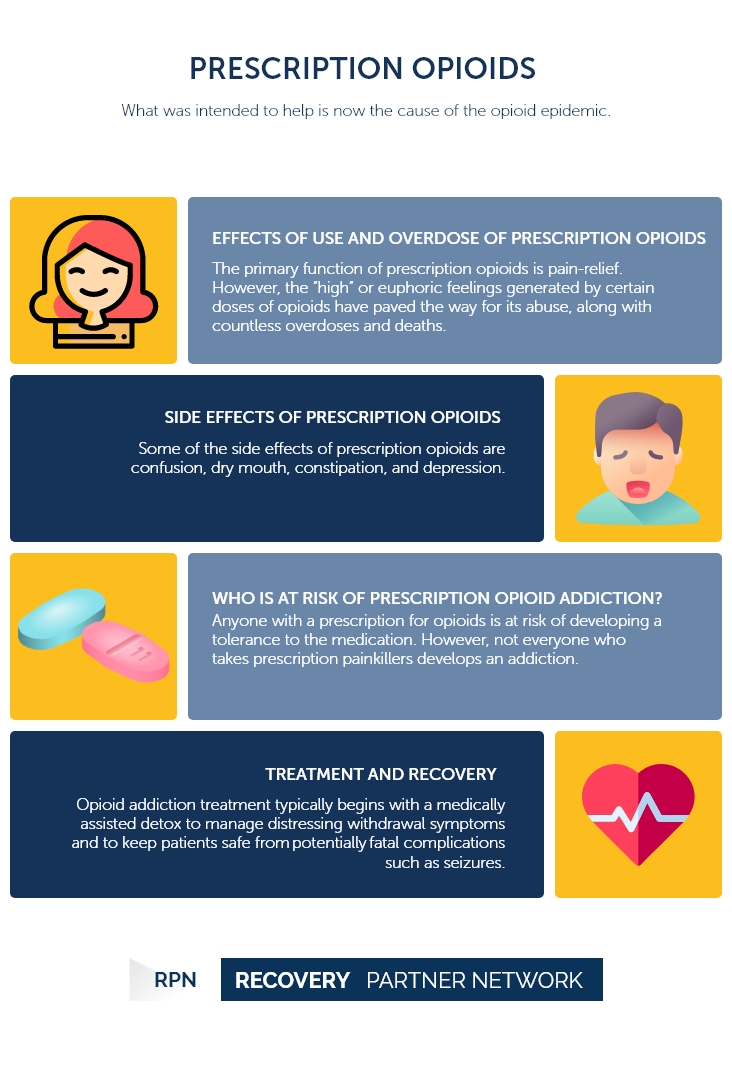What was intended to help is now the cause of the opioid epidemic.
Prescription Opioids
Opioid
- Hydrocodone/paracetamol addiction
- Buprenorphine/Naloxone addiction
- Central nervous system depressant
- Codeine addiction
- Dextropropoxyphene addiction
- Fentanyl abuse
- Hydromorphone addiction
- How Long do Opioids Stay in Your System?
- Hydrocodone addiction
- Kava addiction and abuse
- Loperamide addiction
- Lortab addiction
- Medical prescription opioid
- Methadone addiction
- Morphine addiction
- Norco addiction
- NyQuil addiction
- Opioid use disorder
- OTC substance abuse
- Oxycodone addiction
- Oxycodone/paracetamol addiction
- Opioid epidemic
- Lean addiction
- Pethidine addiction
- Snorting Oxycodone
- Synthetic Opioids
- Tramadol addiction
Medical prescription opioid | Table of Contents
Understanding Prescription Opioids
Also known as prescription painkillers, prescription opioids are a class of drugs derived from the opium poppy, a plant found in Asia, Central America, and South America. Semi-synthetic opioids are produced from opium and man-made compounds that are chemically similar to opium, while synthetic opioids are fully man-made in pharmaceutical laboratories (although increasing amounts of them are illegally manufactured by drug trafficking organizations). Prescription opioids are at the forefront of one of America’s major health crises, the opioid epidemic.
Prescription opioids have been in use for hundreds of years to treat pain, as well as cough and diarrhea. However, the “high” caused by drugs has led to widespread misuse and abuse. Since prescription opioids are highly addictive, any misuse can lead to fatal consequences, such as an overdose or irreversible health complications.
FAQ
- What are the most common prescription opioids?
- How do people misuse prescription opioids?
- Can the use of prescription opioids lead to addiction?
Some of the most common prescription opioids are oxymorphone, oxycodone, hydrocodone, morphine, codeine, and fentanyl.
People tend to misuse prescription opioids by taking more than the prescribed dosage, using the medication to get high, and using someone else’s prescription. Some people misuse prescription opioids by snorting, dissolving, and injecting the liquid into the vein.
Opioids can have a very powerful effect on the brain chemistry of an individual, which could lead to addiction if not used under medical supervision.
Common Prescription Opioids
| Type | Brand Names |
| Codeine | Cotabflu, Fioricet, Tylenol |
| Hydrocodone | Vicodin®, Norco®, Lortab® |
| Oxycodone | OxyContin®, Percocet® |
| Morphine | Roxanol®, Avinza® |
| Meperidine | Demerol® |
| Hydromorphone | Dilaudid®, Exalgo® |
| Fentanyl | Actiq®, Duragesic® |
| Methadone | Dolophine®, Methadose® |
| Buprenorphine | Subutex®, Suboxone® (with naloxone) |
Effects of Use and Overdose of Prescription Opioids
Almost all opioids are central nervous system depressants that slow down automatic processes such as breathing and brain activity, leading to a drowsy and calm state. The primary function of prescription opioids is pain-relief. However, the “high” or euphoric feelings generated by certain doses of opioids have paved the way for its abuse, along with countless overdoses and deaths.
An overdose transpires when an individual finds it difficult to breathe after consuming lethal amounts of opioids. The opioids slow down the respiratory system, leading to a lack of oxygen in the brain, resulting in respiratory failure, coma, and eventually, death. Although death from an opioid overdose can be swift, it is possible to revive someone through immediate medical attention. Even if the overdose does not seem fatal, it is vital to seek medical assistance to prevent debilitating organ system failures caused by lethal opioid doses.
Some of the ways to avoid prescription opioid overdose are:
- Strictly adhere to the medically prescribed dosage and dosing intervals.
- Do not combine opioids with alcohol, sleeping pills, or any prescribed controlled substance or illicit substance.
- Consult your doctor if you require a stronger dose to manage your pain.
- Educate yourself and your family on the signs of overdose and how to use Narcan to stop the situation from escalating.
- Take extreme care in the storage and disposal of the medication to ensure no accidental harm comes to those around you, especially children.
FAQ
- How dangerous is a prescription opioid overdose?
- What are the harmful effects of prescription opioids on the brain and body?
- How do prescription opioids affect the brain?
An opioid overdose could result in death due to irregular breathing leading to hypoxia. Over two-thirds of opioid-related overdoses in the U.S. involve synthetic opioids like fentanyl.
Some of the harmful effects caused by opiates can include confusion, drowsiness, slowed breathing, constipation, and nausea. Misuse of opioids could also lead to hypoxia, which is brought about by slowed breathing.
The opioid molecules bind to the opioid receptors on the cells of the brain, spinal cord, and other organs in the system. After attaching to the receptors, opioid molecules succeed in blocking the pain signals going from the brain to the body and trigger the release of large amounts of dopamine throughout the body.
Side Effects of Prescription Opioids
Prescription opioids are generally administered orally as a pill, sublingually under the tongue, or intravenously. Once the opioids enter the body, they flow through the bloodstream to the brain and spinal cord and attach to active opioid receptors on cells, resulting in blocking pain signals and releasing dopamine. This interaction is extremely addictive and can cause individuals to subsequently depend on opioids to feel good or even normal.
Some of the side effects of prescription opioid abuse or addiction are:
- Confusion
- Drowsiness or reduced consciousness
- Dry mouth
- Constipation
- Depression
- Itching or sweating
- Nausea
- Low testosterone (resulting in lowered sex drive, strength, and energy)
Who is at Risk of Prescription Opioid Addiction?
Anyone with a prescription for opioids is at risk of developing a tolerance to the medication and requiring more and more of it to attain the desired effects. According to the Centers for Disease Control and Prevention (CDC), the risk of opioid dependency greatly increases after five days of consecutive use, even when prescribed by a doctor. Most individuals who form an addiction to prescription opioids report obtaining the pills from either a friend or family member or from a doctor through a prescription. However, not everyone who takes prescription painkillers develops an addiction to it.
Over 200,000 Americans died between 1999 to 2016 due to prescription-opioid-related overdose, increasing the fatalities related to prescription opioids by 500 percent. The rate of overdose is highest among individuals between 18 to 25 years of age as well as non-Hispanic whites and Native Americans. States such as West Virginia, Ohio, Maryland, Maine, Connecticut, Indiana, Illinois, New Hampshire, Utah, and Massachusetts also report the highest rates of prescription-opioid-related overdose.
FAQ
- Can I take prescription opioids if I'm pregnant?
- What type of treatment can people get for addiction to prescription opioids?
It is important to discuss the risks and benefits of taking opioids during pregnancy with your healthcare professional. Taking opioids during pregnancy is safe for you and the fetus only under medical supervision.
Addiction to prescription opioids is typically treated with medications, including buprenorphine, methadone, and naltrexone. These drugs can prevent other opioids from affecting the brain (naltrexone) or relieve withdrawal symptoms and cravings (buprenorphine and methadone), which helps patients avoid relapses.
Prescription Opioid Dependency Vs. Addiction
The physical dependence on opioids is characterized by the emergence of withdrawal symptoms upon drug discontinuation. As dependence is a part of addiction, opioid addiction and abuse also include the inability to quit drug use despite the negative consequences. The development of tolerance and dependence are the initial stage of addiction.
As prescription drug surveillance programs take effect across the nation, fewer pills are purchased or sold illegally on the streets. This occurrence has prompted prescription opioid addicts to replace them with the more easily accessible illegal alternatives. As a result, heroin and illicitly-manufactured fentanyl have engulfed many neighborhoods across the country, causing a spike in overdoses and deaths while prescription opioid fatalities simmered down.
As per the CDC, the four major risk factors for a dependency to develop into addiction are:
- Acquiring overlapping prescriptions from multiple pharmacies and providers.
- Taking high doses of prescription pain relievers regularly.
- Having a mental disorder or a history of alcohol or other substance abuse.
- Residing in rural areas with a low income.
Prescription Opioid Statistics
- More than 46 individuals in the US die every day from a prescription opioid overdose.
- Prescription opioids are related to about 40 percent of all opioid-related deaths.
- Prescription opioids contributed to 17,087 overdose deaths in 2016.
Treatment and Recovery
Drug overdose is responsible for more deaths than guns or vehicle accidents since 2016, especially in Americans younger than 50 years of age. At its peak, overdose rates have risen faster than the HIV outbreak. As such, the Opioid Epidemic was declared as a national health crisis in the US in 2017, with states being granted over $1 billion for addiction treatment and prevention.
Opioid addiction treatment typically begins with a medically assisted detox to manage distressing withdrawal symptoms such as body aches, vomiting, and diarrhea and to keep patients safe from potentially fatal complications such as seizures. Various evidence-based therapies, such as cognitive-behavioral therapy, and addiction treatment medications, such as buprenorphine and methadone, may also be utilized throughout the treatment to help boost the likelihood of a successful recovery.
Recovery Partner Network
We aim to educate and empower. If you feel our library of resources does not cover your specific need, reach out to us, and we would be happy to help.
STATISTICS
© Copyright 2025


